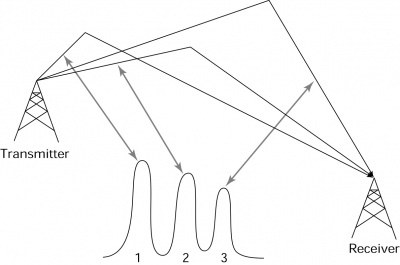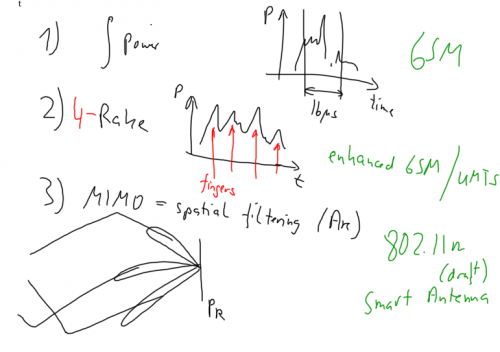Difference between revisions of "B3-Multipath Propagation"
From its-wiki.no
Josef.Noll (Talk | contribs) (Created page with "B3") |
Josef.Noll (Talk | contribs) |
||
| Line 1: | Line 1: | ||
| − | + | ==⌘Multipath and how to use it== | |
| + | {| | ||
| + | |[[File:5-10.jpg|400px|Multipath propagation]] | ||
| + | |Multipath propagation can be used through | ||
| + | #) specific receivers (rake receivers) | ||
| + | #) Multiple-input, multiple-output antenna systems (MIMO) | ||
| + | |} | ||
| + | |||
| + | ===⌘Comments=== | ||
| + | {| | ||
| + | |[[File:ReceiverCharacteristics.png|500px]] | ||
| + | | | ||
| + | Receiver characteristics for usage of reflections in impulse response | ||
| + | * sliding 16 ''mu s'' window and integration of power in this window (typical GSM) | ||
| + | * Rake receiver, where each finger of the receiver points to one reflection (typical enhanced GSM, UMTS) | ||
| + | * MIMO (Multiple input, multiple output) or smart antenna arrays. Here we use spatial filtering, assuming that radiation comes in from different directions (typical 802.11n, smart antennas for UMTS) | ||
| + | |} | ||
Revision as of 20:53, 20 September 2014
| Wiki for ITS | ||||||
|---|---|---|---|---|---|---|
|
⌘Multipath and how to use it

|
Multipath propagation can be used through
|
